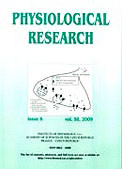Klima J, Lacina L, Dvorankova B, Herrmann D, Carnwath JW, Niemann H, Kaltner H, Andre S, Motlik J, Gabius HJ, Smetana K. Physiol Res. 2009; 58(6):873–84. Epub 2008 Dec 17. IF: 1.653

Abstract:
The glycophenotyping of mammalian cells with plant lectins maps aspects of the glycomic profile and disease-associated alterations. A salient step toward delineating their functional dimension is the detection of endogenous lectins. They can translate sugar-encoded changes into cellular responses. Among them, the members of the lectin family of galectins are emerging regulators of cell adhesion, migration and proliferation. Focusing on galectins-1, -3 and -7, we addressed the issue whether their expression is regulated during wound healing in porcine skin as model. A conspicuous upregulation is detected for galectin-1 in the dermis and a neoexpression in the epidermis, where an increased level of galectin-7 was also found. Applying biotinylated tissue lectins as probes, the signal intensities for accessible binding sites decreased, intimating an interaction of the cell lectin with reactive sites. In contrast, galectin-3 parameters remained rather constant. Of note, epidermal cells in culture also showed an increase in expression/presence of galectin-1, measured on the levels of mRNA and protein, in this case by Western blotting and quantitative immunocytochemistry. Used as matrix, galectin-1 conferred resistance to trypsin treatment to attached human keratinocytes and reduced migration into scratch-wound areas in vitro. This report thus presents new information on endogenous lectins in wound healing and differential regulation among the three tested cases.
-mk-